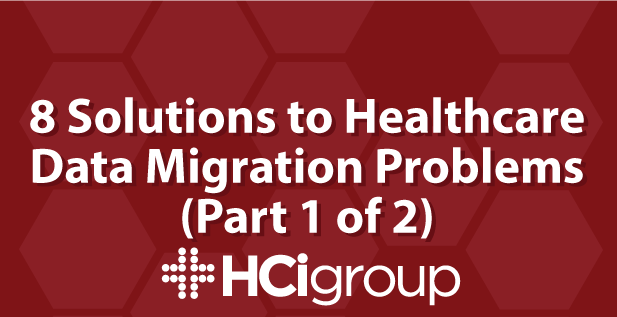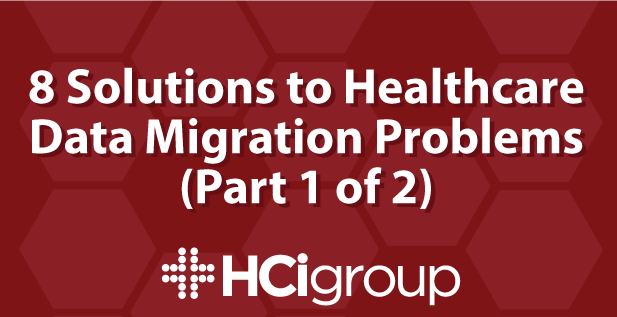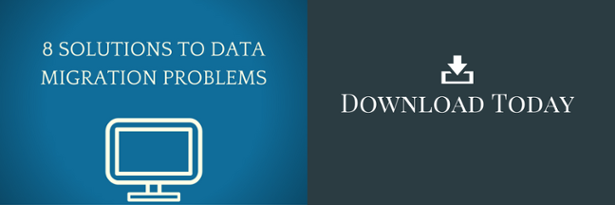8 Solutions to Healthcare Data Migration Problems (Part 1)


Unlike the process used in many other industries, where you can often simply pull records from one source and insert them into another, healthcare data migration is not as simple as transferring information between systems. Migrating data to a new electronic health record system requires expertise in the legacy EHR, as well the new one, with an emphasis on patient care. The HCI Group’s VPs of Integration Services, Mark Jackson and Scott Hassler, take a look at solutions to four common healthcare data migration problems.
Choosing Improper Source Information
Some states require providers to keep patient data for a particular period of time, sometimes seven to ten years. You could maintain only the minimum history; however, migrating additional data could improve care for patients and provide a more robust database for assessing population health and patient outcomes as a whole. You could also go back too far, thereby migrating irrelevant information and wasting valuable time and resources. Determine the length of history based on your needs for patient care. Include any data that could be used for decision-making within the new EHR.
Starting with the Wrong Scope Definition
Decades worth of patient data is most likely dispersed among multiple modules of your legacy EHR, i.e. problems, allergies, patient histories and medications lists. Determining how to extract data and export it for migration into the new EHR requires extensive knowledge of both systems’ architecture, as well as an understanding of the data’s use. Failing to export the data in a format that is compatible with the new system, such as continuity of care documents (CCD), HL7 or comma-separated values (CSV), could delay your conversion’s completion. Similarly, you may decide to extract just summary data when, in fact, your care providers require discrete data that can be used for trending within the new EHR. Focusing on your data’s format and use when formulating your scope definition will mitigate potential conversion problems.
Inefficiency Importing Data
Picking a point-to-point migration into the new EHR, or using a link to a data repository instead, will affect the complexity of your conversion and the eventual accessibility of your data. While neither would necessarily be a wrong choice, one might be more beneficial for you based on your clinical workflows, business workflows, and legal requirements. If much of your patients’ historical information is no longer clinically relevant, then you may want to bring in a data repository to house the excess data. You could then link that repository to your new EHR and directly access clinically relevant data when necessary. Alternatively, your new EHR may have interfaces that allow you to load meta data directly, thereby giving you a complete patient record. Evaluate your specific needs and explore your options before deciding which scenario would work best for you.
Creating Crosswalks Incorrectly
Crosswalks are a critical component of data conversion. But creating them consumes time, especially for medications and allergies crosswalk. For example, medications in NextGen use First data bank and in Cerner uses Multan library. Before data can be loaded to the destination EHR, a crosswalk needs to be established between medications from First data bank vs. medications from Multan library. Establish appropriate expectations and prepare the team of dedicated license professionals who will create your crosswalks.
It is important to be both patient and thorough when migrating data from your legacy system into your new EHR. Identifying problems and have solutions ready before they surface can go a long way in ensuring the success of your data migration project.
Make sure to subscribe to our blog below so that you don’t miss Mark Jackson and Scott Hassler’s final four solutions to common healthcare data migration problems.
Additional Resources You May Be Interested In:
- Data Migration: 4 Steps to Archiving Your Legacy Data
- Data Migration Strategy: Defining Your Scope (Video)
- Data Conversions Best Practices
- Selecting the Right Interface Engine - Top 5 Considerations

